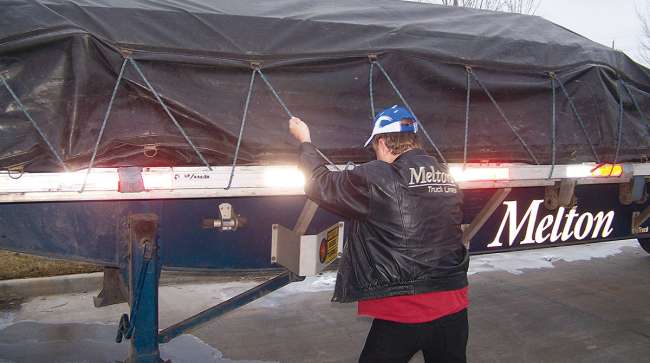Senior Reporter
Improving Pay Is Best Way to Retain Drivers, Companies Say

Two more trucking companies have announced pay increases for drivers, following a trend that is helping address the industry’s immediate need to attract and retain drivers, and that experts said is part of a larger strategy for addressing the shortage in the long term.
Bangor, Maine-based Pottle’s Transportation, a regional carrier serving the Northeast, said it will boost pay by 9% for both per-mile and hourly drivers beginning in the second quarter. It also is introducing a quarterly incentive program that rewards drivers for achieving safety and fuel-economy goals.
“We’re known for our driver longevity, so it’s very important to us to be able to give back to those who have dedicated their career to our company,” said Pottle’s Vice President Chelsea Pottle Demmons. “We are so excited to keep our growth headed in the right direction by giving more to our drivers while attracting those looking for a place to call home.”
Tulsa, Okla.-based flatbed carrier Melton Truck Lines on March 30 boosted its driver pay by 2 cents per mile, lifting experienced drivers to 56 cents, and student drivers to 43 cents. Melton also lifted by 8 cents per mile pay for over-dimensional loads, and added 6 cents per mile for hazardous materials loads and trips out of Canada. Melton also retained its $5,400-a-year performance bonus plan, based on a driver’s safety and productivity.

Reymer by Joseph Terry/Transport Topics
Melton also lifted tarp pay to $50 a truck, and adopted a $25 repower payment for drivers who swap loads in the middle of a trip. Each affected driver receives the extra money.
“Our professional drivers have certainly earned this well-deserved raise. They are continually striving for excellence in a demanding, yet highly rewarding career path,” said Melton Chairman and CEO Bob Peterson. “In designing this pay increase, we conducted a companywide driver pay survey to gain further insight into what our drivers would like to see changed in their overall compensation package.”
Experts said these latest increases demonstrate that companies are fighting to retain drivers at a time when the economy is red-hot.
“We have been seeing announcements like this, and I think it will continue,” said American Trucking Associations chief economist Bob Costello. “I don’t care what product you’re short, what happens to the price of that product? It goes up. When you’re short drivers, and in this case the price is their pay, so the natural market reaction to any shortage is that the price will go up and in this case, it is the driver’s pay.”
He noted that freight volume was up 5.4% during the first two months of this year compared with the same period in 2017.
ATA estimated that the industry was short 50,000 drivers at the end of 2017, and Costello said that could swell to more than 174,000 by 2026.
He also noted the driver pool is aging: The average age for an over-the-road driver in the truckload segment is 49, while less-than-truckload and private carriers have higher average ages.
The notion of allowing drivers ages 18 to 21 to drive interstate has long been discussed as a remedy for the driver shortage; currently, they’re permitted to drive only intrastate. But that could change. Last month, U.S. Reps. Duncan Hunter (R-Calif.) and Trey Hollingsworth (R-Ind.) introduced legislation that would permit drivers in the age group to drive trucks interstate, through a commercial driver licensing program that would include extensive training and mentoring.
The bill would require these drivers to log 400 hours of on-duty time and 240 hours of driving time with an experienced driver in the cab alongside them.
ATA President Chris Spear has announced his support for the legislation, and at least one recruiting executive believes opening interstate opportunities to younger drivers could completely address the driver shortage.
“I think it’s enough to fill immediately the hole that exists now,” said Jeremy Reymer, CEO of recruiting services firm DriverReach, in an interview with Transport Topics. “This would be an immediate reprieve from the pressure everyone is feeling.”
“Carriers are in a good place,” he added. “It’s a growth opportunity. But they can’t run trucks due to the shortage.”
Staff Reporter Burney Simpson contributed to this report.




